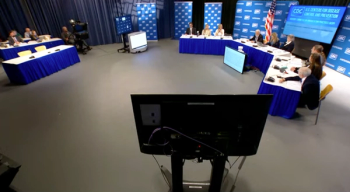
Earlier HCV treatment improves cost effectiveness of care
Treating hepatitis C virus (HCV) infection at early stages of fibrosis improves health outcomes and is cost-effective, a new study finds.
Treating hepatitis C virus (HCV) infection at early stages of fibrosis not only improves health outcomes but is cost-effective, according to a new study.
“Our analysis indicates that treating hepatitis C early averts advanced liver disease (liver failure and liver cancer) and increases the number of healthy life years for patients. This makes treating patients early cost-effective compared to waiting until they have higher degrees of liver fibrosis or cirrhosis, as many insurers currently require,” lead author Harinder Chahal, PharmD, MSc, assistant adjunct professor in the department of clinical pharmacy at the University of California at San Francisco, told Medical Economics.
However, for many hepatitis C patients, high drug prices limit access to treatment, which needs to be addressed, he added.
Chahal and colleagues developed a simulation model to compare treatment cost for all treatment-naive patients with those with advanced fibrosis. The model made projections for 1,000 patients, but presented the results normalized to a single HCV-infected person receiving six HCV therapy options, particularly combined sofosbuvir and ledipasvir therapy, or no treatment.
The researchers reported their
The research also discovered that earlier treatment was more cost-effective. Among patients receiving eight or 12 weeks of sofosbuvir-ledipasvir, treating all fibrosis stages compared with treating stages F3 and F4 adds 0.73 quality-adjusted-life years (QALY) and $28â¯899, for an incremental cost-effectiveness ratio of $39,475 per QALY gained. Treating at stage F2 (portal fibrosis with rare septa) costs $19,833 per QALY gained versus waiting until stage F3. Treating at stage F1 (portal fibrosis without septa) gained $81,165 per QALY as compared with waiting until stage F2. Treating at stage F0 gained $187,065 per QALY as compared with waiting until stage F1.
Results for other regimens show a similar pattern.
“Our analysis indicates that decreasing the drug costs would reduce the incremental cost-effectiveness ratio,” Chahal said. “For example, at retail prices, treating just 50% of genotype 1 patients over the next five years will cost $53 billion. However, with a 46% reduction in drug costs, that figure is reduced to $29 billion.”
The high cost of HCV treatments makes it challenging for most health systems to treat all HCV-infected patients. “Insurance companies put into place prior authorizations that require patients to progress to higher levels of liver disease, thus effectively limiting access to a cure with new drugs. Payers may think that treating at severe fibrosis or cirrhosis is less expensive, and per our analysis, the costs are lower with later treatment initiation,” Chahal said. “However, the cost-effectiveness assessment also takes into account the effects of this spending, including averted HCV disease. This results in some savings in medical costs, offsetting part of the initial expense, and improved health status, measured as QALYs.”
Chahal noted that new therapies are highly effective and short in duration with minimal side effects. “When there were few treatment options that were not very effective and had substantial side effects, it made clinical sense to not expose patients to a year-long toxic therapy with about 50% cure rate. Our analysis indicates that there are health benefits to treating early now.”
Newsletter
Stay informed and empowered with Medical Economics enewsletter, delivering expert insights, financial strategies, practice management tips and technology trends — tailored for today’s physicians.















